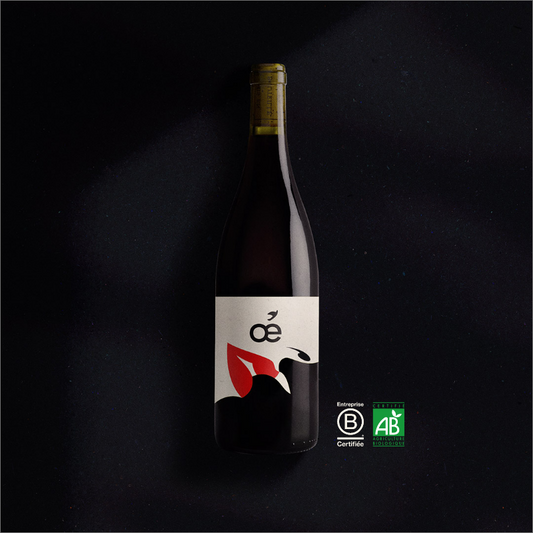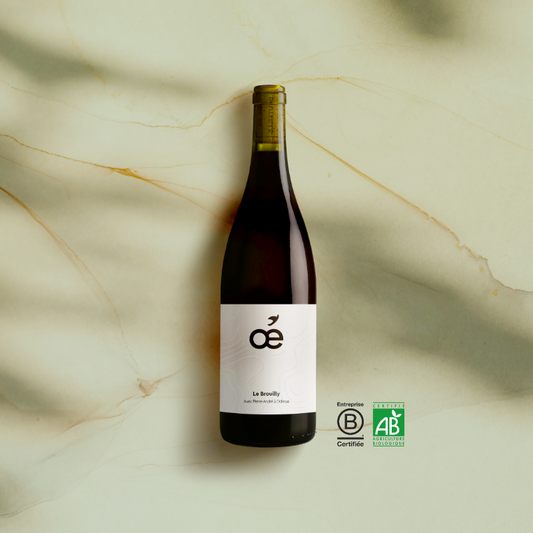The locker: impossible or less convenient?
No offense to Tom Cruise, at Oé we accepted the mission and all the challenges that go with it. If you were born before the 90s (or are a fan of Tom), you must smile at this first sentence because you knew the instruction before it became a “fight” or an ecological question. It was not until the 1960s that the industrialization and automation of production caused the deposit to disappear little by little. For years, the question did not even arise. Reusing was the norm , bringing a bottle back to the supermarket a habit or even seeing the milkman come by several times a week to exchange between empty and filled bottles.
There was a turning point between the 60s and 90s as manufacturers began to use disposable packaging (unlike reusable ones) as a selling point. Being able to throw away was presented as simpler, more practical, faster, more hygienic and sometimes even a form of wealth. Over the years, the locker has become outdated. Associations and industrial lobbies for the production of packaging in France have worked very hard to make us forget (or believe) that the deposit is complicated or even “environmentally unfavorable” - yes, you read that right.
Finally the deposit is only a lost habit. But why is it so complicated to put back in place?
See this post on Instagram
The history of lockers at Oé
Two years ago , our co-founder Thomas said: “We've been thinking about this locker project for several months and today we're happy that it's materialized. Reusing a bottle instead of recycling it saves nearly 33% of water. We are already collaborating with around thirty committed stores in Lyon, and soon in Paris in December. Our goal is to extend this process to businesses, caterers and restaurants.”
Today we are proud to tell you that the deposit of Oé bottles is a national network of 15 deposit partners , grocery stores all over France, caterers and restaurants with whom we deploy all this. Moreover, if you have an empty Oé bottle in your cupboards, you can bring it back, once clean, to one of our collection points.
To find the point closest to you, it's here.
It may seem trivial, but when we started, few wine professionals encouraged us in this direction. According to them, the deposit of wine bottles was impossible because it was too complicated to set up for most winegrowers or producers. It is true that the deposit is based on a principle of massification and standardization .
But with this type of mindset, you never innovate for fear that no one will be a fan of the product. Do you think Thomas Edison thought that no one would use his light bulb because all homes would have to be connected to electricity? No, he innovated and the rest followed. Far be it from us to have invented anything, quite the contrary… But it's not because the most cautious didn't see a future in it that we stopped believing in our dreams.
The proof, today all our bottles are consigned, apart from that of Crémant for security reasons - indeed the pressure in the sparkling bottles is such that it weakens the bottle to the point where reusing it does not yet seem possible.
The advantages of the deposit
There are many advantages to the deposit and although the following list is not exhaustive, we think that it will be enough to convince you that bringing back your containers will not require you to question your daily life.
Environmental benefits
Although they may seem obvious to you - don't worry to us too - you will have understood that not everyone is ready to defend this postulate. And yes, many Europeans, especially the French, have in mind that glass is infinitely recyclable, and that therefore recycled bottles do not contain new raw materials. However, not only is this not the case but in addition, “recyclable” does not mean “recycled”.
For example, in 2020 in France, only 85% of glass was recycled . The rest was buried.
As for the percentage of recycled materials in a new bottle, we are far from 100%. In all bottles not reused there is a share of new raw material: 70% for transparent bottles and 25% for green bottles, at a minimum.
Now let's get to the recycling itself. Glass recycling centers have ovens that run day and night, 7 days a week at 1550°C to melt shards of glass (cullet). Even if the use of cullet can lower this temperature a little compared to a production entirely based on new materials, the environmental impact of running these furnaces will never be as low as that of reuse.
Reusing is not always easy, especially since all our production habits have to be changed to adapt to the cleaning of a bottle. For example, the label glue must be water-soluble to allow the easiest possible removal. To wash a bottle , nothing could be simpler: water at 85° and soda in very small quantities - so it has no impact on health
Financial benefits
If today a bottle from the deposit still costs a little more than a new or partly recycled bottle, the tipping point will not be long in coming.
Raw materials are becoming increasingly rare , the political context in Europe is tense and the covid has not finished showing the tip of its nose. All these conditions are not ideal for the industrial production of glass containers. Let's remain optimistic, reuse is one of the solutions!
To date (March 2022), the price of new bottles has increased by 45% compared to last year. Soon, production will no longer even be possible, it will be necessary to resort to reuse for both economic and environmental reasons.
Even if we were not living in such an uncertain period, deposit and reuse could overshadow production and recycling if it were massified and logistically optimized. All we need is legislation that standardizes the system and makes it simpler and more convenient to reuse bottles, both on the side of traders, producers and distributors and on the consumer side.
Obstacles to reuse
What really makes life hard for us and makes us pedal in the semolina is really the legislation . For decades, industrial lobbyists have worked very hard to make the French re-employment sector as underdeveloped as possible. And these lobbyists do their job very well. If you are interested in power relations between lobby and government, we strongly recommend the film Goliath which deals with the subject of pesticides.
We tell you more about organic and pesticides in the vineyards here :)
If reuse were to be a French expression, “it's easier said than done” would be by far the big winner.
The instruction requires the participation of many actors . If we know how to deliver full bottles, the processes for recovering empty bottles are not as optimized and easy to set up. Firstly because the bottles brought back by the consumer have to be stored . All of this takes space. And space is expensive. Once the bottle is recovered, it must be cleaned . Again, not so easy. If in the 60s, the deposit was a well-established system, today everything has to be rebuilt and the companies capable of washing and redistributing the bottles are not so numerous - but they are developing rapidly so we do not worry . not ;)

And finally, our last brake is not really one. It 's us , you and all the consum'actors who are gradually getting back into the habit of bringing their bottles back instead of throwing them away. We are convinced that it is only a matter of habit and education, but we are not fooled. There is also an element of practicality that comes into play. So if you have an idea or a suggestion to make to us that would make your life easier to install the locker in your daily life, do not hesitate to send us an email at hello@oeforgood.com ! We'll be all ears :)






